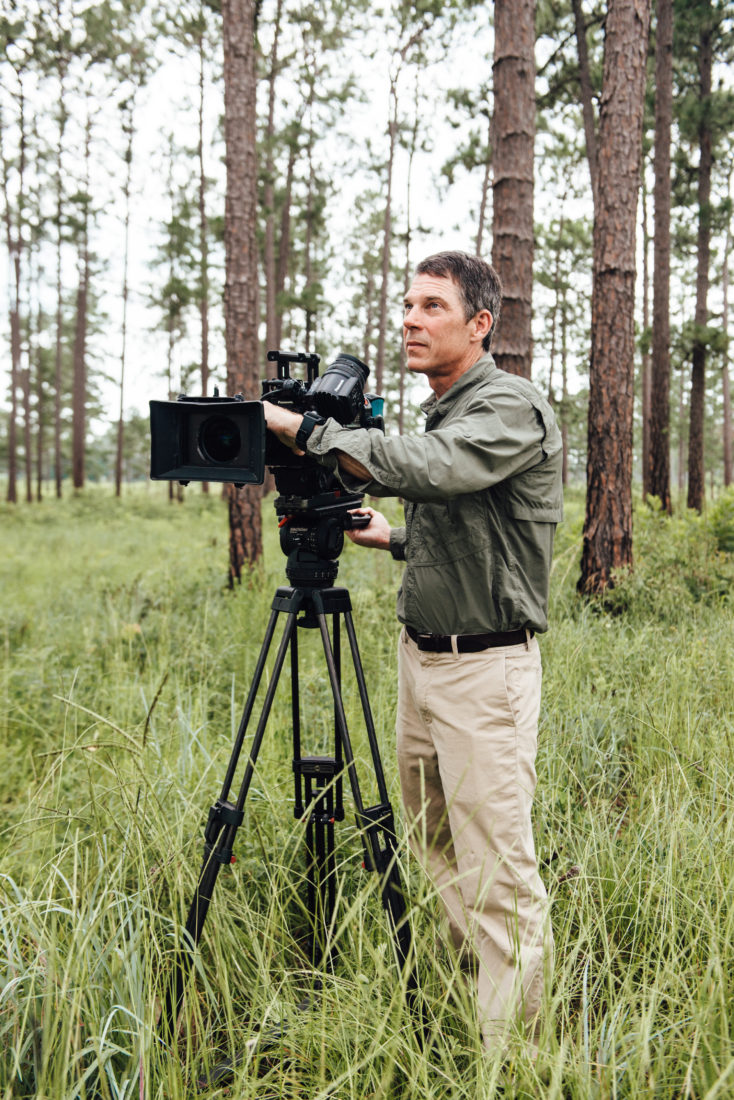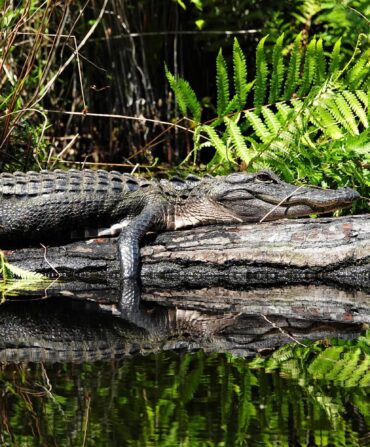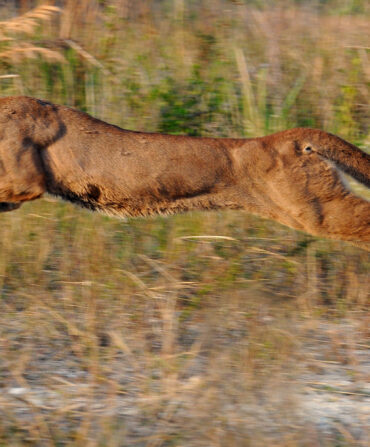Rhett Turner will go to almost any lengths to tell a good story—in this case, about whooping cranes. “The days started at four in the morning,” he says of the shooting schedule for Journey of the Whooping Crane, his recent documentary about North America’s tallest birds and their return from near extinction. “They do their best movement at first light and in the evenings, so you have to start early.”
While enduring predawn wake-up calls, Turner and his longtime production partner, Greg Pope, spent two years traveling to seven locations—from the Northwest Territories of Canada through Texas, Louisiana, Alabama, and Florida—to capture the cranes’ twenty-five-hundred-mile annual migration. The filmmakers slept overnight in bird blinds, shot from motorboats, rigged drones with high-definition cameras, and generally did anything necessary to capture the resilience of the unique birds, as well as the enormous efforts under way to protect them and grow their numbers.
“I want people to take away from the film how beautiful the bird is and how much humans have done to help bring this bird back from the brink of extinction,” Turner says. After their number shrank to about fifteen in the 1940s, the whooping crane population has rebounded to almost 850 today. “But we need to be vigilant, and we need to pass the care of these animals on to the next generation.”
At fifty-three, Turner knows what it means to be “the next generation,” as one of the five children of Ted Turner, the founder of CNN and an avid outdoorsman and conservationist. Growing up in Atlanta and, later, rural South Carolina on the family estate, Rhett had a life as a Turner that meant sailing, hunting, fishing, and anything else that kept him and his siblings outside, often on the water. “Dad instilled in us from a very young age how important the landscape is,” Turner says, “to keep it natural and to take care of it.”
After getting hands-on experience editing video at CNN’s Tokyo bureau and earning his bachelor’s of fine arts in photography from the Rhode Island School of Design, Turner began to infuse that commitment into his films. Many document the efforts required to bring some of the world’s most endangered species and resources back to health for the future, often with a focus on the South (and most are available to stream).
“I’ve done a lot of traveling all over the world, but to be able to do something in the Southeast, where I grew up, gives me the ability to focus on the backyard,” he says. “And the backyard is very pretty, very dramatic, and gives the opportunity to do some very good work.” That work also includes Secrets of the Longleaf Pine, which chronicles the battle to protect the ecologically critical longleaf forests that once covered ninety million acres, from Texas to Virginia, but have dwindled to just 5 percent of their original footprint. And Turner’s latest film, Georgia from the Air, offers an expansive aerial tour of the state shot entirely with drone-mounted cameras. Audiences get a bird’s-eye view of barely there towns, mountain mornings, Friday-night lights, Atlanta’s skyscraping towers, sunrise beaches, and yes, longleaf pines.
“Rhett has a genuine passion for the conservation of nature, and that is expressed through his films,” says Dr. George Archibald, the cofounder of the International Crane Foundation, which worked with Turner and Pope as they filmed. “He’s made a huge impact.”
Turner predicts he won’t be the last to carry the torch. “My son has been raised in the outdoors,” he says. “My nieces and nephews, too, have been raised as stewards of the environment.” Call them the next next generation, ready to extend the family legacy.








